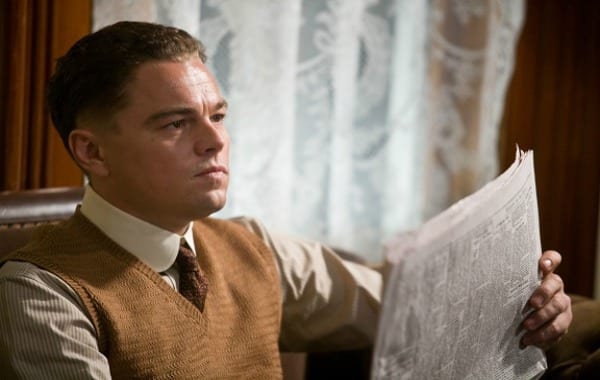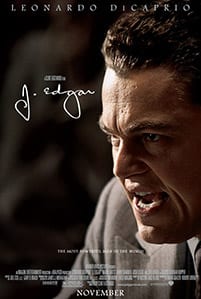The screening ended, there was no applause, just an embarrassed silence. After what felt like a film lasting somewhere between 2 and a half hours and 3 hours, “J. Edgar” was finally over. The long awaited film from veteran filmmaker Clint Eastwood is a disappointment. The film seems to try to be a “Citizen Kane” for J. Edgar Hoover, but simply fails to be an outstanding film – or even an interesting one.
Produced and directed by Clint Eastwood and written by Dustin Lance Black (“Milk”), “J. Edgar” is a biopic of J. Edgar Hoover’s life as head of the F.B.I. The story is told through incoherent segments as he tells different writers his life’s story. When the film is in its first hour, J. Edgar is shown as an outstanding innovator of the early 20th century. By the time its over, feelings lead to him being a paranoid, deceiving, closet homosexual which leads to confusion about who he really was. The film does include strong performances from Leonardo DiCaprio and Armie Hammer, with other familiar faces including Naomi Watts, Stephen Root, and Judi Dench.
Initially covering the back round of J. Edgar, the latter part focuses primarily on the life of Hoover and his love interest – Clyde Tolson (played by Hammer). Hoover is shown to be a person so intent on fighting communism, that he rarely does anything other then obsess over his job. Scared of getting close to women and centered on the character of others, especially the men whom he employs, Hoover gets to have a closer relationship with Tolson than is expected. The film is also very darkly lit, with a grey overtone throughout which almost gives it the feeling as if its in black-and-white. This leads to uninteresting use of shadows, typical of what “Citizen Kane” established successfully in the early 1940’s.
Hoover’s overall goal in the film, it seems, is to tell the world through the works of the writers interviewing him how successful he had been. Also, to keep his reputation as well as the F.B.I.’s reputation in tact although the grounds from which Hoover tells of how things occurred are shaky. The film doesn’t paint a positive portrait of J. Edgar Hoover, showing him more as a little man with big ideas – striving to be taken seriously. He did, no doubt, still leave an indelible mark on centralizing a system that would possibly still be in the chaotic shambles depicted in the film before he was in charge.
In short, the trailer for the film is better than the actual film itself. Seeing the film only results in reflection of what was just seen and why it had been made at all. Most importantly, why Clint Eastwood decided to make the film – seeing as how “J. Edgar” falls significantly short in comparison of his other films dating back to the early 1970’s.
J. Edgar is now in theaters worldwide.







